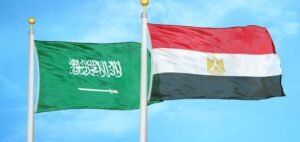On Tuesday, Saudi Arabia’s Cabinet, headed by Crown Prince Mohammed bin Salman, approved the Kingdom’s state budget for the fiscal year 2025. The budget projects revenues of SR1.18 trillion ($315.73 billion) and expenditures of SR1.28 trillion, which will be financed with a deficit of SR101 billion ($27 billion). It is a continuation of the government’s expansionary fiscal policies focused on driving long-term economic growth, particularly through diversification and strategic investments.
The real GDP growth rate of Saudi Arabia is estimated at 4.6 percent for the year 2025, while the growth rate for the current year, 2024 is 0.8 percent, mainly estimated through the expansion of the non-oil sector based on a target agenda in Vision 2030. Budget projections are based upon the same baseline economic scenario that balances revenue and spending assumptions, accommodating, of course, global fluctuations in this sector.
It projects fiscal deficits to stabilize within the medium term to amount to SR130 billion for the year 2026, then SR140 billion during 2027. Concurrently, revenues would gain growth over the same period of time and may achieve an extent of SR1.3 trillion during 2027. Public debt is then going to amount to SR1.3 trillion and by the end of the year 2025 amount to 29.9% of the GDP- sufficient for covering all finance the kingdom will require in covering these amounts.
FY2025 Budget The budget has primarily focused on keeping the critical public services intact while huge provisions have been made in defense, health, and social development. Military spending is expected to grow by 5%. Defense spending will reach SR272 billion. Health and social development will consume SR260 billion, which is 20.25% of the budget.
The government will maintain fiscal discipline with regard to long-term debt sustainability. This is through the various financing options available between local and international markets, like issuance of bonds and sukuk and project financing. In reality, the robust fiscal position of the government provides financial reservoirs to respond well to an economic shock.
Crown Prince Mohammed bin Salman emphasized again the commitment of the Kingdom to Vision 2030, reaffirming diversification and growth in the private sector, sovereign wealth funds (such as the Public Investment Fund) in the short-term perspective, but this time on long-term stability. All these strategic reforms are bound to place Saudi Arabia at the forefront, resilient and competitive, as a global economy player.




